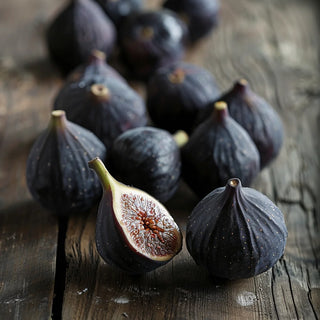
Ensure your Black Mission Fig tree thrives by following proper planting guidelines.
How to plant Black Mission Fig trees?
Plant your Black Mission Fig tree in well-drained soil with plenty of sunlight to promote healthy growth. Dig a hole that's twice the width and depth of the root ball to allow for ample root expansion. Add organic matter or compost to improve soil fertility and support robust growth right from the start.
When to plant Black Mission Fig trees?
The best time to plant Black Mission Fig trees is in early spring or late fall when the tree is dormant. Planting during these seasons helps the roots establish before the onset of extreme weather conditions. Avoid planting during the hottest months of summer to prevent transplant shock and stress.
How far apart should you plant Black Mission Fig trees?
When spacing Black Mission Fig trees, allow at least 15 to 20 feet between each tree to accommodate their mature size. This spacing ensures proper air circulation, reducing disease risk and promoting healthier growth. Consider the specific variety and your garden's layout to optimize space and tree development.
Ensure your Black Mission Fig tree thrives by following proper planting guidelines.
How to plant Black Mission Fig trees?
Plant your Black Mission Fig tree in well-drained soil with plenty of sunlight to promote healthy growth. Dig a hole that's twice the width and depth of the root ball to allow for ample root expansion. Add organic matter or compost to improve soil fertility and support robust growth right from the start.
When to plant Black Mission Fig trees?
The best time to plant Black Mission Fig trees is in early spring or late fall when the tree is dormant. Planting during these seasons helps the roots establish before the onset of extreme weather conditions. Avoid planting during the hottest months of summer to prevent transplant shock and stress.
How far apart should you plant Black Mission Fig trees?
When spacing Black Mission Fig trees, allow at least 15 to 20 feet between each tree to accommodate their mature size. This spacing ensures proper air circulation, reducing disease risk and promoting healthier growth. Consider the specific variety and your garden's layout to optimize space and tree development.
